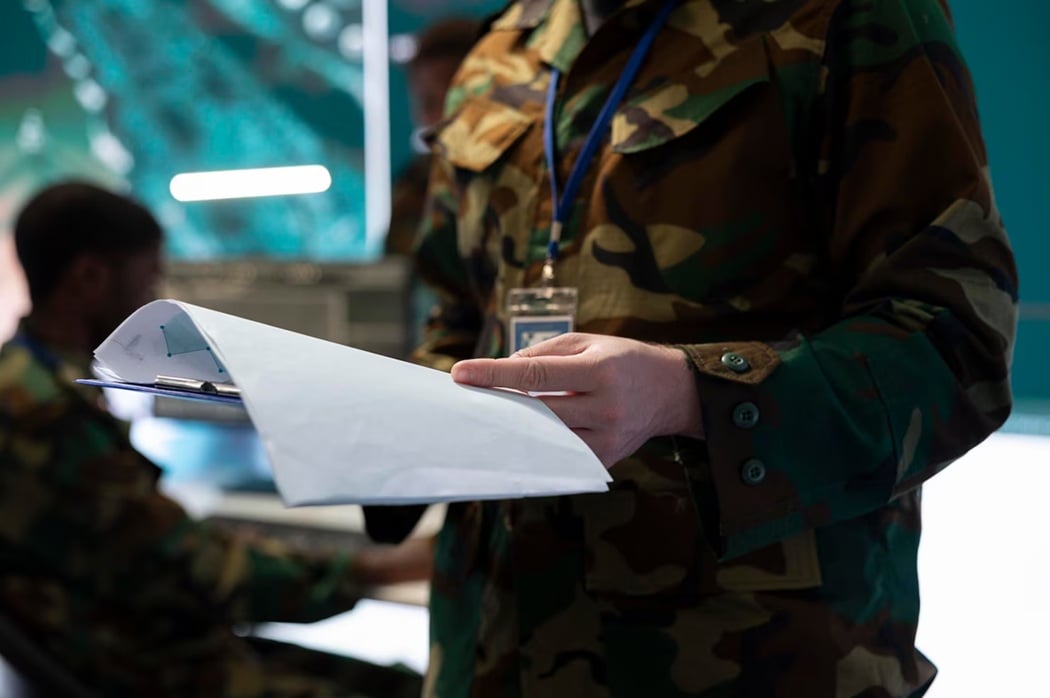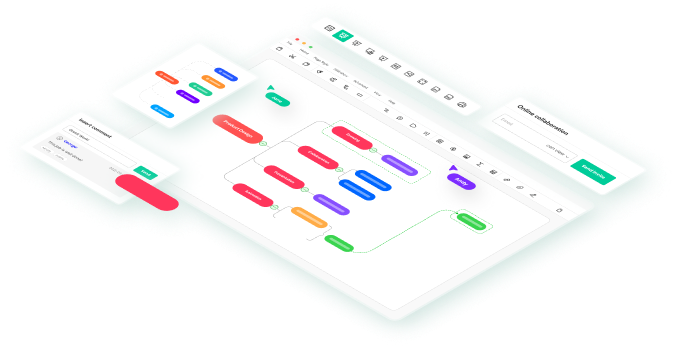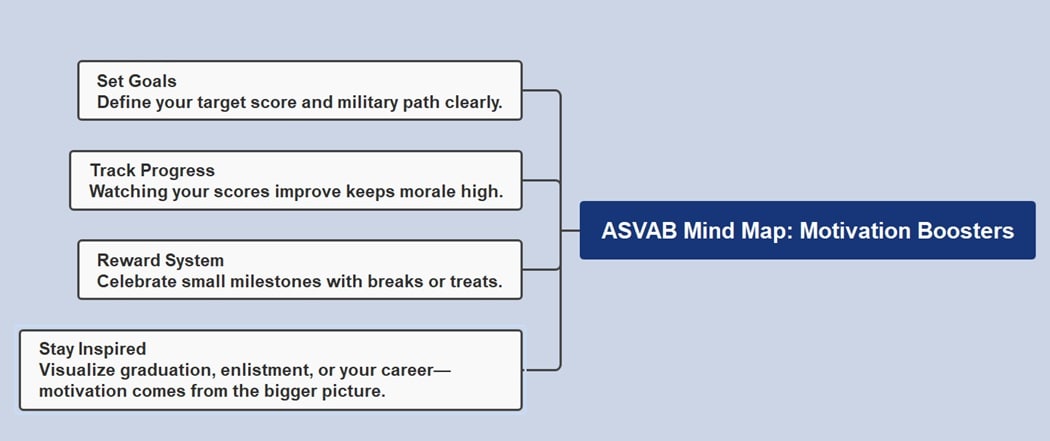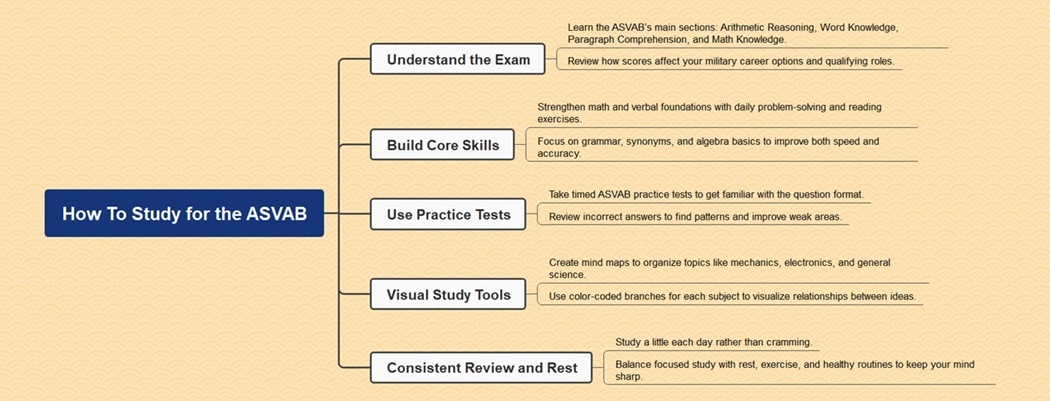
The test required to enlist in the military of the United States is called the ASVAB (The Armed Services Vocational Aptitude Battery).
Are you too interested in joining the military? If yes, you will have to pass this test.
By preparing for the ASVAB and doing well on it, you will be able to join the armed forces and qualify for a certain job.
This article will discuss how to study for the ASVAB and consider the following aspects:
In this article
About the ASVAB
This part will cover the introduction to ASVAB and the topics it covers.
What Is ASVAB
The test you must pass to join the United States Military is called ASVAB.
Without passing this test, you will not be allowed to be a part of the Army, Air Force, Navy, Marines, or any National Guard branch of the United States.
The next question: What does this test determine? The ASVAB test determines whether a person has the mental aptitude to handle the responsibilities of the military branch to which he has applied.
Moreover, it also defines the job that you can perform according to your mental capacity.
History of the ASVAB Test
The ASVAB was first introduced in 1968 as a way to evaluate the abilities of people interested in joining the military. At that time, the test aimed to place recruits into suitable roles.
By 1976, the ASVAB became the standard test across all branches of the United States Armed Forces. Over time, it was refined to measure both general academic skills and specific technical aptitudes needed in modern military careers.
Paper vs Computer ASVAB
The ASVAB was originally taken only on paper. Test-takers answered questions in a booklet, then their scores were manually calculated. This method is still available in some places, though it takes longer for results.
The computer version, called CAT-ASVAB, is more common today. It adapts questions to the test-taker’s ability, so each person gets a unique test experience. Scores are provided quickly, making it a faster and more efficient choice.
Who Can Take the ASVAB
The ASVAB is open to anyone interested in joining the United States military. Typically, high school students or people with a diploma or GED are eligible. It measures readiness for enlistment and job placement.
Some schools also offer the ASVAB as part of career exploration programs. This allows students to discover strengths in academic or technical areas. Even if they do not join the military, the test can guide future careers.
Which Topics Does the ASVAB Cover?
There are two options to take the ASVAB test: you will either choose the computer-based option or the paper-based version of the ASVAB. Here are 10 different subtests in the computer version and nine subtests in the paper version.
The computer-based version consists of an auto subtest and a shop subtest. On the other hand, the paper ASVAB covers both auto information and shop in the subtest.
The Science domain of the ASVAB has subtests of General Science, Auto and Shop Information (Paper), Mechanical Comprehension, and Electronics Information.
The Math domain has Mathematics Knowledge and Arithmetic Reasoning subtests, while the Verbal domain deals with Word Knowledge and Paragraph Comprehension. In the Spatial domain, Assembling Objects is included.
If you choose Military Entrance Processing Station (MEPS), you will have to take the computer-based ASVAB. The computer-based version of subtests has either 11 or 16 questions.
The paper-based version consists of subtests ranging from 15 to 35 questions. You can also check the sample questions of each section in ASVAB from the official ASVAB site to test yourself.
How To Study for the ASVAB
This guide has discussed the introduction to ASVAB and the topics it covers. Now, it’s time to discuss how one should study for the ASVAB:
Make a Study Schedule
The first step towards knowing how to study for the ASVAB is to plan your studies and act upon the plan.
You should plan two to three months before the test and research for about two to three hours a day during that period. You can manage test preparation alongside your studies by setting aside time specifically for the ASVAB.
Practice More
You should practice a lot for your ASVAB test. It's because you need to be familiar with the structure of the problems and how the questions are designed to trick you.
Secondly, you must prepare for all the difficulty levels that will be given in the exam.
The final reason is to be so familiar with the test that you can easily tackle the hard questions on exam day.
By practicing, you will learn from your wrong answers, and if the question comes in your exam, you will know the correct answer.
Focus on Your Weaknesses
You must not ignore your weak areas, no matter how tempting it looks to avoid the hardest questions, i.e., Logic games.
Remember that the area you are trying to skip because of its complexity can also turn out to be the section where you gain the most numbers.
Read Some Study Guides
Select the best study guides for the preparation of your ASVAB test. There are a lot of options to pick from.
First, you should decide on the right prep course and then find the guide for it. If you are overwhelmed by the idea of setting your schedule yourself, you can find a course with a set schedule.
Use Flashcards for Vocabulary
Word Knowledge is an important part of the ASVAB. Using flashcards daily helps you memorize definitions and synonyms quickly. You can create digital or paper cards and review them during breaks for consistent improvement.
Join a Study Group
Studying with others can make preparation more engaging. Group discussions allow you to explain concepts, share strategies, and get different perspectives. A support system also helps keep you accountable and motivated during long study periods.
Mind Maps To Help You Study for the ASVAB
Now, the final section will cover developing your ASVAB study guide and organizing the exam material.
Develop Your ASVAB Study Plan
Preparing for ASVAB means you should plan to study for the exams and work on the helping projects.
When you plan your hours effectively, you will be able to allocate a good time to all subjects included in the ASVAB. So, you should make a proper mind map and then aim to study for the ASVAB accordingly.
A weekly schedule mind map helps you balance study, rest, and daily activities. It shows when to review subjects, practice tests, and take breaks. This balance makes your ASVAB preparation smoother and easier to maintain over the long term.
ASVAB Core Study Areas
The ASVAB Core Study Areas mind map highlights the importance of math skills by focusing on algebra and geometry. Mastering equations, inequalities, and formulas helps test takers solve word problems.
Verbal skills encourage stronger vocabulary and reading comprehension practice. Review using flashcards and inference questions. Prepare for the Word Knowledge and Paragraph Comprehension sections for better performance.
ASVAB Motivation Boosters
This ASVAB mind map shows how to boost your study drive. You can set goals that guide your progress. Tracking results builds confidence, and giving yourself small rewards makes study sessions feel easier and more motivating.
Another step is to stay inspired by imagining your future in the military. Picture yourself graduating, enlisting, or starting your career. These visions create energy and purpose, helping you keep focus during ASVAB preparation every day.
Centralize Your ASVAB Exam Material
While preparing for the ASVAB, you will have collected a huge number of materials on each of the included subjects.
However, it will be a nearly impossible task to revise them for the final test. Therefore, you should make well-structured mind maps and organize the notes according to their significance.
Tips for Studying for the ASVAB
The ASVAB covers multiple subjects, and smart preparation makes a big difference. These study tips will help you build discipline, focus, and confidence before test day.
Plan Your Study Timeline
Begin preparing early to give yourself enough time to master each section. Divide topics into small, daily study goals. Create a realistic plan that fits your schedule, giving extra time to tougher areas.
Focus on High-Value Sections
Prioritize Arithmetic Reasoning, Word Knowledge, and Mathematics Knowledge. Mastering these areas improves your AFQT score, which determines your eligibility and job placement across different military branches.
Take Timed Practice Tests
Practice under real test conditions. Use official ASVAB practice exams or online mock tests to learn pacing and question structure. Track your scores to see improvement. Time-based drills strengthen focus, accuracy, and stamina.
Build Vocabulary and Math Memory
Review words and definitions every day using flashcards or apps. For math, focus on formulas, unit conversions, and word problems. Break big concepts into smaller examples. Consistent repetition strengthens long-term memory and makes recall faster during the exam.
Use Mind Maps To Organize Study Areas
Create ASVAB-focused mind maps in EdrawMind to connect related subjects. For example, link “Math Knowledge” to “Formulas” or “Word Knowledge” to “Synonyms.” Visual maps help simplify large topics, track progress, and keep your study routine structured and motivating.
How To Boost Efficiency With a Mind Map
Preparing for the ASVAB can feel overwhelming. The test covers math, science, mechanics, vocabulary, and more. Wondershare EdrawMind helps bring structure to this challenge.
It organizes study material into clear visual maps that make review faster and smarter. With mind mapping, you can track formulas, link definitions, and strengthen recall.
EdrawMind turns scattered notes into structured study plans. It helps you see connections between subjects, making your preparation sharper and more complete:

AI Study Guide Planner
Type in “Arithmetic Reasoning” or “Mechanical Comprehension.” EdrawMind builds a mind map with major topics. You can expand each branch into examples, formulas, and practice questions for deeper review.
File to Slide Task Map
Upload PDFs, class notes, or prep guides. EdrawMind arranges them into a study map. This saves time and avoids disorganized notes.
Pic to Mind Map
Take photos of textbooks, practice problems, or diagrams. EdrawMind scans and structures them into neat visual maps. This captures knowledge you might miss otherwise.
AI Mapping
Enter keywords like “Word Knowledge,” “Math Knowledge,” or “General Science.” EdrawMind generates topic maps. Edit and refine them to match the ASVAB sections you need to focus on.
Concept Map Maker
Link related sections across the test. For example, map “Electronics Information” to “Mechanical Comprehension” or “Paragraph Comprehension” to “Word Knowledge.” Seeing these links strengthens overall understanding.
Text to Mind Map Maker
Paste practice questions, formulas, or word lists. EdrawMind instantly shapes them into visual study maps. This helps you review more efficiently and retain key details under test pressure.
Here’s a mind map on how to study for ASVAB generated using EdrawMind’s AI:
The ASVAB study mind map helps learners understand the test’s structure and focus areas. By visualizing sections like Math Knowledge, Word Knowledge, and Science, students can set clear goals and prepare strategically for each part.
It emphasizes skill-building and consistent practice. Strengthening math and reading abilities through small daily sessions improves comprehension and accuracy. Timed practice tests also help students adapt to real exam pressure and pacing.
Finally, it highlights balance and organization through visual tools like mind maps. Creating color-coded branches simplifies complex subjects, while consistent rest and reflection maintain mental focus, confidence, and readiness for the official ASVAB exam.
Conclusion
The article includes an overview of the ASVAB test and how to study for the ASVAB. The article has discussed the ASVAB study guide and the significance of making a mind map for it.
For creating detailed mind maps for the ASVAB test, EdrawMind assists in collaborative mind mapping. This tool is beneficial for outlining thoughts to develop a clear mind description.
There are also templates available that address the various aspects of creating a study plan. The brainstorming mode will help you conduct group sessions, whereas the Gantt mode will help you view the mind map.
FAQ
-
What is the hardest part of the ASVAB?
The hardest section depends on your background. Many test-takers struggle with Arithmetic Reasoning and Word Knowledge. These sections demand problem-solving and vocabulary recall under time pressure. Practice tests help identify personal weak areas so you can focus your preparation smartly. -
Do I need to be good at math to pass the ASVAB?
Math is important, but it’s not the only focus. Sections like Arithmetic Reasoning and Mathematics Knowledge weigh heavily. You can balance with strengths in Word Knowledge or General Science. Regular practice with math problems helps make these areas less intimidating. -
What score do I need to join the military?
The required score depends on the branch. Each service sets its own minimum AFQT cutoff. For example, the Army may accept lower scores than the Air Force or Navy. Higher scores give you more job opportunities and career flexibility. -
Can I study for the ASVAB on my phone?
Yes, many apps and online resources are designed for mobile learning. You can review flashcards, practice vocabulary, or solve math problems on the go. Using tools like EdrawMind Mobile makes it easier to study consistently, anytime, and anywhere. -
What happens if I fail the ASVAB?
Technically, you don’t “fail” the ASVAB, but you may score below the requirement. You can retake the test after the waiting period. Preparing more thoroughly next time with targeted practice often helps raise your score and improve your eligibility.











